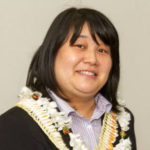Session Description
The Hospitality and Tourism Education program at Kapiolani Community College does not have a dedicated website to provide students more information about the program. To address this need, this project designed and evaluated a website to welcome and further familiarize new students to the program. The aim of the website was to help students understand the major they have declared and feel comfortable proceeding along their new academic pathway. The website was designed using the ADDIE model in conjunction with the ARCS model of motivation. Technically, Ninjamock was used to create a wireframe of the website and Wix was used to build the actual site which included images and videos to attract attention and entice motivation. In terms of evaluation, 15 (n = 15) adult students participated in a usability test conducted over video conferencing software. Using the methods explained in Krug (2009), the usability test involved three iterations of testing and re-design. Feedback from the testing was generally positive as participants felt the website was easily navigable, contained satisfying content which made them feel welcomed, and interested them in the program. Overall, the project was a success; however, there were some aspects of the project that could be improved. This presentation will review the results of the usability in full and discuss the implications or designing informational websites for students.
Presenter(s)
 Julie Takeda
Julie Takeda
Learning Design and Technology
University of Hawaii at Manoa
Julie grew up in San Jose, California and currently resides in Honolulu, Hawaii. She holds a Bachelor in Arts degree in Japanese Language from the University of Hawai'i at Mānoa. While working as a secretary for the Hospitality and Tourism Education Department at Kapi'olani Community College, she is a LTEC master’s student in her final year at University of Hawaiʻi at Mānoa.
